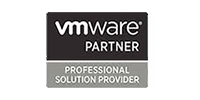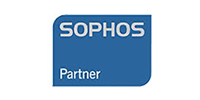
Bridging the gap
Every software development project starts with a vision…
Organisations considering software development usually have a rough idea of how they want to realise that vision. They may have a well-defined process that they want to automate, a legacy application that needs modernising or a market opportunity they want to capitalise on. The organisation (aka client) will have a goal, however, bridging the gap from goal to end-product can be difficult. For product owners (i.e. the person, or persons, with the initial product vision) articulating exactly what they want to a software development team is immensely difficult. That is why creating a strong communication channel between your organisation and your software partner is so important.
The Pitfalls of Ineffective Communication
If communication is key to successfully executing software development projects, the opposite is also true. A lack of proper communication, or having no definite communication plan, is a sure-fire recipe for project failure. The main problems that arise from poor communication between an organisation and its software partner include:
- Lack of clarity around project goals, objectives and desired outcomes.
- Product vision not being properly shared between client and partner, resulting in the wrong product being built.
- A reduction in productivity leading to timeline and budget overruns.
- Missed deadlines which can lead to a loss of trust and confidence.
- Limited buy-in and commitment from key stakeholders.
- Products which fail to hit commercial goals.
Understanding the Roles in Building an Effective Client-Partner Communication Channel
The drastic consequences of poor communication underscore the importance of building strong relationships and placing a focus on efficient communication from the get-go. But how can you mitigate the risk of communication breakdown? Like any high-performing team, effective communication during a software development project requires everyone to understand their role and responsibility. The typical roles involved in bringing a successful product to market are:
- Product Owner – This is typically the person trying to solve a business problem. They have a product vision and the funding to realise the vision.
- Product Manager – This person is responsible for coordinating all the activities required to bring the product to market. This involves bridging gaps between different functions and aligning the teams involved including marketing, sales, operations and customer support. They are also the primary go-to person for the software engineering team.
- Business Analyst – The BA works closely with the Product Manager, converting product requirements into software requirements which can be then be fulfilled by the software engineering team.
- Project Manager – This person is the main communications hub and has overall responsibility for the successful initiation, planning, design, execution, monitoring, controlling and delivery of the project.
- Software Engineering Team – consists of software and quality assurance engineers responsible for building the product on the appropriate technology.
Building a Successful Client-Partner Communication Plan
Once everyone understands their roles in the product development process, the next step requires putting a communication plan in place. This plan should nail down the who, what, when, and how of effective client-partner communication.
- Who – This step involves identifying the key contact points. Who are the key stakeholders on the Product Owner (client) side? Who will act as the touchpoints on the software partner side? Knowing all the points of contact allows for a smooth, flowing communication channel.
- What – Within an effective communication plan there should be an agreed understanding of what will be communicated. The software partner works with the product manager to develop a clear product roadmap, where key milestones and minimum product requirements are clearly identified at each stage. It is also critical to nail down deadlines and budgets to avoid any ambiguity. It is also important to decide what status reports are to be used to communicate progress.
- How – How will requirements be communicated and how will the engineering team handle roadblocks? What is the decision-making process? Putting an effective process in place means that low-risk decisions can be negotiated quickly and easily. Without effective decision making and communication channels, a software project can quickly descend into chaos and cause frustration for the entire team. The ‘how’ also encompasses selecting a method of communication. How will information be relayed to key stakeholders? Is it meetings, demos, status reports?
- When – What communication schedule will be put in place? At ActionPoint, the key points of contacts are often in daily contact, while other key stakeholders are updated according to a weekly or monthly schedule. This all contributes to building an effective client-partner communication channel.
Putting Communication at the Centre of Your Next Software Project
Building a strong, clear and efficient communication channel between you and your software development partner is a key component in delivering a successful software development project. When selecting a software partner, it’s vitally important to consider how well you both can communicate with one another. You have a vision of where you want to go. An effective client-partner communication channel will help you get there.
Start building a strong relationship today. Contact ActionPoint at https://actionpoint.ie/contact/ and we can help you bring your idea to life.
Gain New Perspectives.
Receive more insights from ActionPoint by signing up for our newsletter below.


















